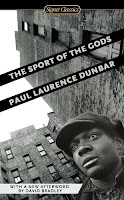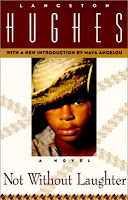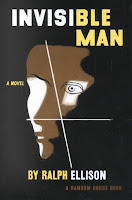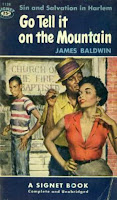This content is being reviewed in light of recent changes to federal guidance.
Men and Migration–Revisited
The movement of black people from the South to the North stands out as a major recurring theme in African American literature. Looking at a select few black male novelists work will reveal how migrations patterns are expressed through fictive representations of black male protagonists.
Rudolph Fisher’s short story “City of Refuge,” Charles W. Chesnutt’s shorty story “The Wife of His Youth,” and Ishmael Reed’s novel Flight to Canada showcase protagonists who migrate northward and offer reading audiences conflicting views about the North as the “Promised Land.” As mentioned in a earlier post, northern cities have been both places of economic opportunities and oppressive conditions.

Paul Laurence Dunbar’s The Sport of the Gods (1902) focuses on the fictional accounts of the Hamilton family, a wealthy African American family, as they fall from social graces. Beginning in an unnamed Southern town as a very prosperous family and ending in New York City amongst scandal and prison, Dunbar creates a story about the numerous challenges, opportunities, and drawbacks about urban

James Weldon Johnson’s The Autobiography of an Ex-Colored Man (1912) focuses on the trials of an unnamed, biracial narrator coming to grips with the tough racial realities in America. From his time as a child in a small Georgia town at the beginning of the novel to his decision to live as a white man in New York at the story’s end, readers come to grips with the tense social negotiations that are associated with skin tone, social status, and the larger legacy of slavery.

Langston Hughes’s novel Not Without Laughter (1930) focuses on the coming of age of the male protagonist Sandy. His move from the small fictional town of Stanton, Kansas, to Chicago, Illinois, presents him with many challenges as he transitions into manhood.

Ralph Ellison’s novel Invisible Man (1952) deals with the educational and intellectual development of the unnamed protagonist. His travels from a small, college town in Alabama (largely inspired by Ellison’s experiences at Tuskegee) to New York bring the narrator face-to-face with the communist-like group the “Brotherhood and its chief rival Ras the Exhorter.

James Baldwin’s Go Tell It on the Mountain (1953) reflects the sometimes-strained relationships between the black church and its members. Particularly, in flashbacks, readers encounter the migration patterns of brother and sister, Gabriel and Florence. Both of the siblings, at separate times, decide to leave their unnamed Southern home in search of the more worldly opportunities of New York City.